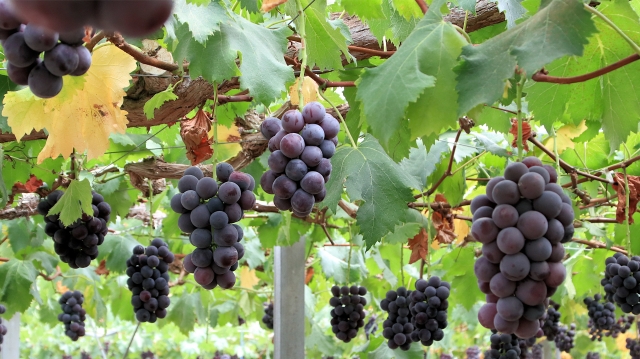Fruit picking in Japan isn’t just about eating fruit — it’s a seasonal tradition that connects people with nature, family, and food.
From juicy strawberries in spring to crisp apples in autumn, every season brings a new flavor to discover.
Agritourism in Japan

Across Japan, farms open their gates to visitors for hands-on fruit-picking experiences. This form of agritourism has quietly existed for decades, long before the term became popular.
Families, couples, and travelers visit the countryside to enjoy fruits fresh from the tree.
How It Works
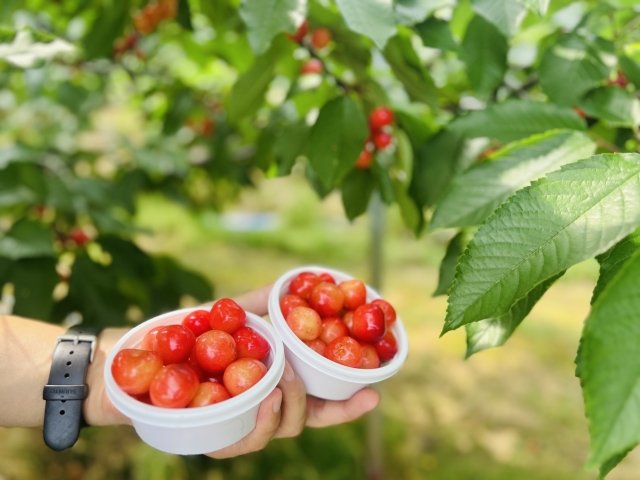
Most farms charge a flat fee for “all-you-can-eat” fruit within a certain time — usually 30 to 60 minutes. Others use a “weigh-and-pay” system, letting you take home the fruit you picked by weight.
Prices, rules, and available varieties vary widely, so it’s best to check the farm’s website or local tourism page before visiting.
Some farms include small extras, such as a homemade jam souvenir or even a chestnut rice bento (kuri gohan lunch box) made from their own harvests.
Popular Fruits by Season
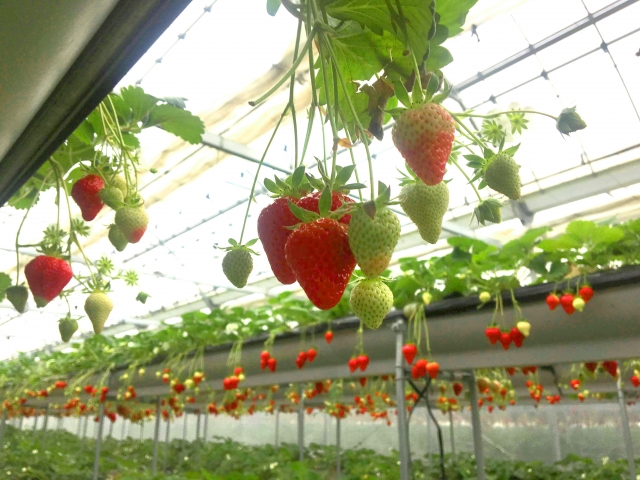
- 🍓 Strawberries – December to May (in greenhouses)
- 🍑 Peaches – June to August
- 🍇 Grapes – July to October (Muscat, Kyoho, Shine Muscat… plenty of varieties!)
- 🍐 Pears – August to October
- 🍎 Apples – September to November
- 🍊 Mikan (Mandarin Oranges) – November to January
Each visit feels different — even at the same farm — because the harvest time and fruit variety change with the season. That unpredictability is part of the fun.
Educational and Fun for Kids
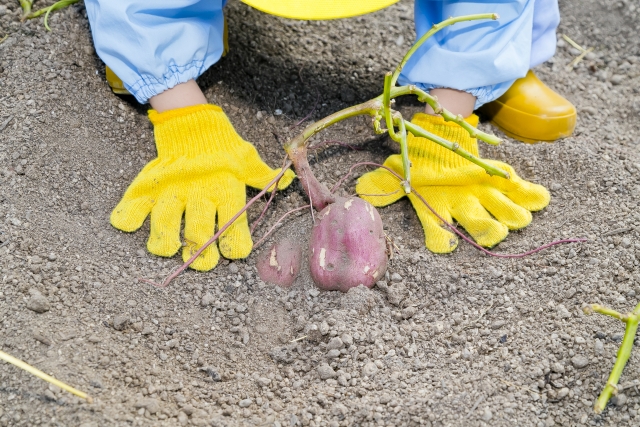
Sweet potato digging (imo-hori) is a beloved autumn activity in Japan.
Many kindergartens and elementary schools include it as part of environmental education — children plant, grow, and finally harvest their own potatoes, learning teamwork and patience along the way.
Chestnut Picking: A Fall Favorite
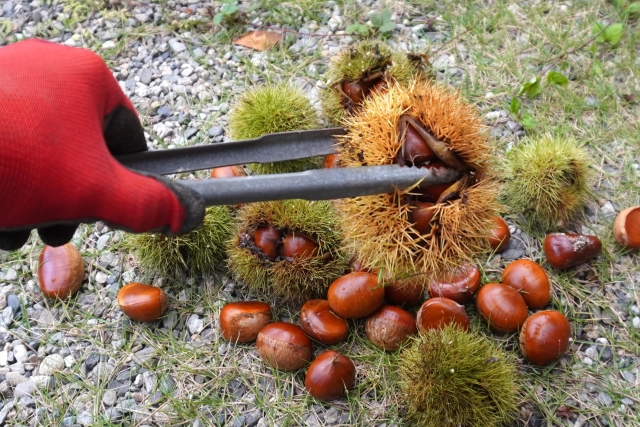
Unlike most fruits, chestnuts don’t hang on trees waiting to be plucked — they drop naturally when ripe. Visitors walk through chestnut groves and pick the fallen nuts from their spiny shells, often collecting up to one kilogram to take home.
Some farms let you pay by weight (for example, around ¥800–¥1,200 per kg), while others include a set amount in the entry fee. Rules and prices differ by region, so always check before you go.
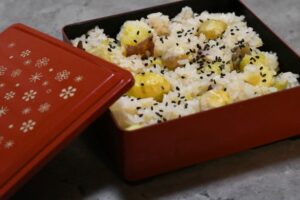
At certain farms, your visit even comes with a chestnut rice lunch — the perfect autumn treat.
Tips for Visitors

- Check the harvest calendar before visiting — it changes by region and weather.
- Bring comfortable shoes and gloves if you plan to dig or pick chestnuts.
- Take cash; some rural farms don’t accept credit cards.
- Respect farm rules — don’t waste fruit or step on growing plants.
Editor’s Note: A Little Tip from a Fruit-Picking Veteran

Here’s my personal secret to enjoying strawberry picking to the fullest — I always stop by a supermarket on the way and buy a loaf of bread and a can of whipped cream.
After a while, when I’ve eaten enough strawberries on their own, I start making fresh fruit sandwiches right there at the farm. Soft bread, whipped cream, and sun-warmed strawberries — it’s a simple luxury that tastes like pure happiness.
Of course, this means there’s less room left for more strawberries, but that’s the beauty of it. Fruit picking isn’t a contest to eat until you burst — it’s about slowing down and savoring the moment. To me, that’s the true “grown-up” way to enjoy it.
So next time, bring a little creativity — and maybe some whipped cream — and make your own sweet memory in Japan’s countryside.

